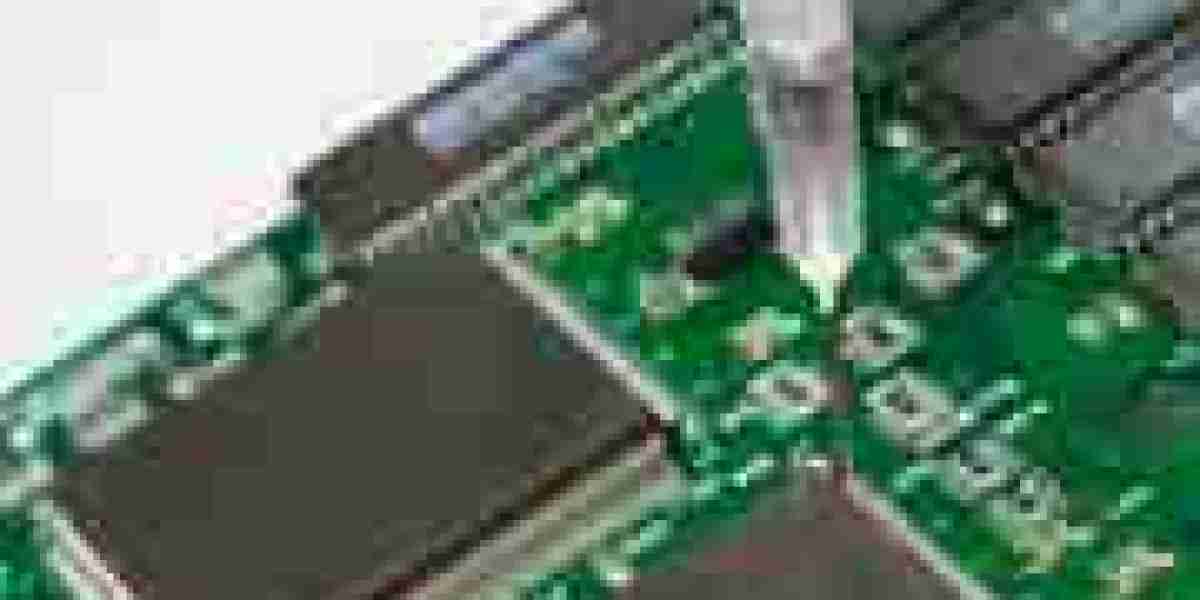The electrically conductive adhesives (ECA) market is witnessing significant growth, driven by technological advancements and the rising demand for more efficient, reliable, and environmentally friendly bonding solutions. ECAs offer a unique combination of adhesive bonding and electrical conductivity, making them indispensable in a variety of applications such as electronics, automotive, aerospace, and medical devices. As industries evolve, the demand for high-performance, sustainable, and cost-effective bonding solutions has propelled the development of new materials, formulations, and manufacturing techniques. This article delves into the latest developments in the Electrically Conductive Adhesives Market, highlighting key innovations, market trends, and future growth drivers.
Key Innovations in ECAs
Alternative Conductive Fillers: Traditional electrically conductive adhesives primarily rely on silver as the conductive filler due to its excellent conductivity. However, silver’s high cost and potential supply issues have prompted manufacturers to explore alternative conductive fillers. New developments are focusing on materials like copper, nickel, carbon nanotubes, graphene, and graphite. These alternatives offer comparable electrical conductivity while reducing costs, making ECAs more accessible to a broader range of industries. For instance, carbon nanotubes and graphene not only improve conductivity but also offer increased strength and flexibility, enhancing the overall performance of ECAs in flexible and wearable electronics.
Low-Temperature Curing ECAs: The demand for low-temperature curing ECAs has increased as manufacturers strive to bond heat-sensitive components in high-precision industries like electronics, automotive, and medical devices. Traditional curing processes often require high temperatures that can damage delicate components. However, low-temperature curing ECAs can be processed at temperatures as low as 80-120°C, which helps prevent thermal damage. These developments are particularly crucial for the assembly of miniaturized electronic devices and components, where traditional soldering methods are not viable due to their heat sensitivity.
Nanotechnology and Smart Materials: The integration of nanotechnology into ECAs is another significant development. By incorporating nanoparticles into the adhesive formulation, manufacturers can significantly enhance the conductivity, durability, and flexibility of ECAs. Nanotechnology allows for precise control over the particle size and distribution, improving the adhesive’s performance even in challenging environments. For example, the use of silver nanowires or graphene-based nanoparticles can result in ECAs with superior electrical performance and mechanical strength, making them ideal for applications in flexible displays, sensors, and wearable electronics.
Flexible and Stretchable ECAs: The demand for flexible and stretchable electronics, such as wearable devices, has spurred the development of ECAs that can maintain electrical conductivity while being bent, stretched, or twisted. Flexible ECAs are designed to adhere to a variety of substrates, including soft and stretchable materials, while providing reliable electrical conductivity. This is particularly important in the growing market for flexible and wearable electronics, which require adhesives that can maintain performance even under mechanical stress. Flexible ECAs are also used in applications such as foldable smartphones, flexible displays, and smart textiles.
Market Trends Driving Growth
Growing Demand for Wearable Electronics: The rise in demand for wearable devices, including fitness trackers, smartwatches, and health-monitoring devices, is a significant trend driving the Electrically Conductive Adhesives Market. These devices require miniaturized, flexible, and reliable electrical connections, which can be effectively achieved using ECAs. As wearable electronics continue to gain popularity, the demand for ECAs in this sector is expected to grow, leading to further innovations in adhesive formulations to meet the specific needs of these applications.
Increase in Electric Vehicle (EV) Production: The automotive industry’s transition toward electric vehicles (EVs) is another key driver for the ECA market. EVs rely heavily on electronic components such as battery packs, control units, sensors, and charging systems, which require highly reliable, conductive bonding materials. ECAs offer several advantages over traditional soldering methods, including better performance in challenging environments and compliance with environmental regulations. As the EV market continues to grow, particularly with the rise of hybrid and fully electric vehicles, the demand for ECAs in automotive manufacturing is expected to increase significantly.
Environmental and Regulatory Pressures: With increasing environmental awareness and stricter regulations around the use of hazardous substances, there is a growing push for sustainable and lead-free alternatives to traditional soldering materials. ECAs, which are free from harmful substances like lead and cadmium, are becoming a popular choice for manufacturers who want to comply with environmental regulations such as RoHS (Restriction of Hazardous Substances) and REACH (Registration, Evaluation, Authorization, and Restriction of Chemicals). The focus on sustainability is a significant trend that is expected to continue driving the adoption of ECAs across industries.
Miniaturization of Electronic Devices: As the electronics industry continues to focus on miniaturization, the demand for ECAs is increasing. Smaller, more compact electronic devices require bonding solutions that offer high electrical conductivity, mechanical strength, and resistance to heat and moisture. ECAs are particularly suited for these applications, as they can be used in the assembly of tiny, intricate electronic components without compromising performance. This trend toward miniaturization is particularly prominent in industries such as consumer electronics, telecommunications, and medical devices.
Future Outlook and Projections
The Electrically Conductive Adhesives Market is expected to continue its growth trajectory in the coming years, driven by advancements in material science, increased demand for flexible and wearable electronics, and the growing adoption of electric vehicles. As technology continues to evolve, ECAs will play an increasingly important role in a variety of high-performance applications, from consumer electronics to automotive manufacturing.
Key areas to watch for future growth include:
Integration of Smart Materials: The development of ECAs that incorporate smart materials with self-healing or adaptive properties will unlock new opportunities in applications requiring high reliability in harsh environments.
Continued Innovation in Alternative Fillers: Research into cost-effective and high-performance fillers will continue to drive innovation in ECAs, expanding their applicability to a broader range of industries.
Expansion of the EV Market: As the global shift toward electric mobility accelerates, the automotive sector will become one of the largest consumers of ECAs, driving growth in the market.
Advances in Nanotechnology: Nanotechnology-based ECAs will lead to improved electrical conductivity and better mechanical properties, enhancing the performance of ECAs in next-generation electronics and wearable devices.
Conclusion
The Electrically Conductive Adhesives Market is undergoing significant developments, with innovations in alternative fillers, low-temperature curing adhesives, and flexible formulations paving the way for broader adoption across various industries. As the market continues to expand, driven by trends such as the rise of wearable electronics, electric vehicles, and the demand for sustainable manufacturing practices, ECAs are poised to play a crucial role in the assembly of high-performance electronic devices. The developments in material science and adhesive technology are set to transform the ECA landscape, making it an exciting and rapidly evolving sector to watch in the coming years.




